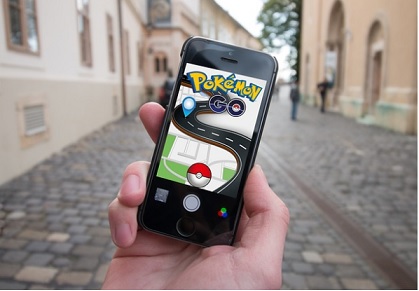Here are the augmented reality trends to watch for into the rest of this year.
Headsets
Thus far, no competitor has challenged Microsoft’s Hololens as the dominant product in the AR headset market, with the possible exception of Magic Leap. As more consumers adopt the technology, its users will likely explore how they can apply it in professional settings. Very soon, companies will realize that the Hololens isn’t just a novelty product for gaming and other recreational pursuits.
Developers will also begin to create more applications for the product, exploring and expanding its capabilities. Already, new apps like HoloMaps are demonstrating the usefulness of an AR headset.
More Mobile Experiences
Both Snapchat and Pokemon Go! deserve credit for introducing AR to mainstream consumers. In other words, they’ve already proved that AR experiences will benefit from an inherent social and mobile component.
The natural next step is for developers and brands to take notice. Users can expect upcoming AR products to leverage mobile technology and social media to conveniently link them with a wider community.
Retail Applications
Although e-commerce has quickly put brick-and-mortar stores at risk, retailers still have difficulty generating conversions via mobile devices. Users generally purchase online goods via their computers. The mobile shopping experience simply isn’t enticing enough.
AR will change that. Retailers and marketers can use this technology to offer customers exciting mobile experiences that will potentially lead to more conversions.
For instance, a furniture company could give customers the opportunity to superimpose holographic images of a couch or lamp onto pictures of their living spaces taken via smartphone. An apparel brand could let users “try on” their garments by superimposing them over selfies. In the future, companies could even identify their own products on a user’s screen, offering discounts or product information automatically.
Mixed Reality
Augmented reality adds elements to the real world via holographic lenses and mobile device screens. Virtual reality inserts users into entirely fictional worlds. Mixed reality blends the two. And it’s not as far off as you may think.
In the near future, you may have the chance to bridge the gap between virtual reality and the world in which you currently live. By combining elements of a VR game with your surrounding environment, you can have a fully immersive experience. Or you might tour a famous historic site, interacting with virtual characters who blend in seamlessly with their environments.
The growth potential for augmented reality is undeniable. Whether you’re a developer, marketer, or consumer, it’s an exciting time for anyone with an interest in these technologies.
 |
| Faizan Ahmad |
This article is posted by Faizan who is the Founder and Chief Editor of TechCarving. He is a Professional Blogger and Entrepreneur. You can connect him on Google+.
